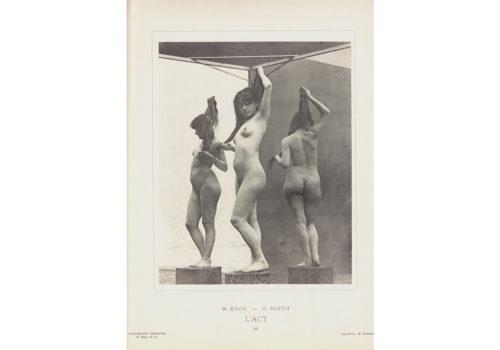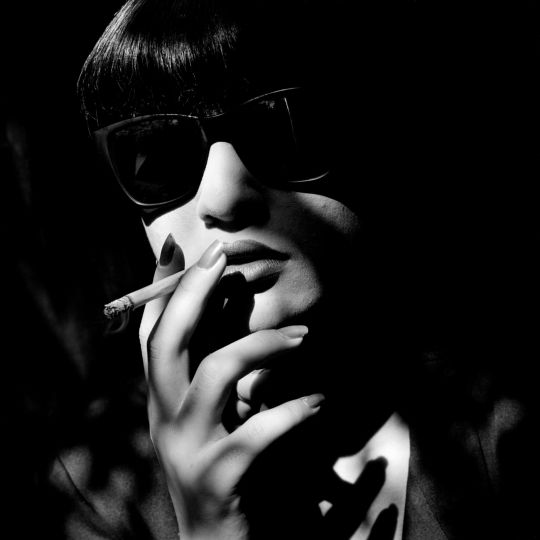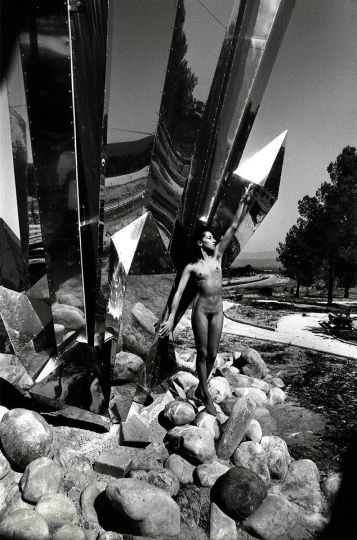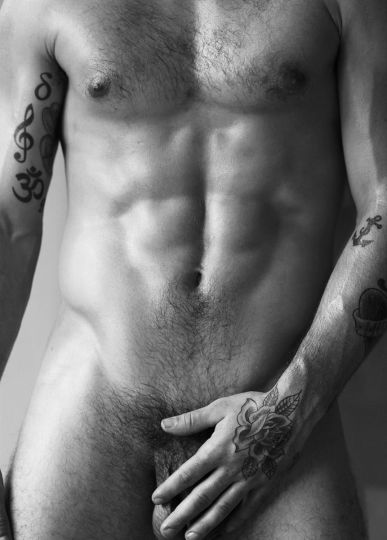My last column published in The Eye of Photography was several months ago, and not without reason. In the meantime, I have been busy preparing for the centenary of the association that I have the honor and privilege of chairing; it is now done, and here I am at peace for a century.
I therefore return to this subject that I began to develop in my previous talk: fantasy in nude photography (with all its variants: extravagance, whim, zaniness, oddity, surrealism, grotesque…). After having mentioned the two main representatives of this trend which was not very widespread before the First World War, I will now focus our interest on the period which followed it, a period of around twenty years rich in social and cultural mutations and innovations, but with relatively few events relating to this theme, unlike the years 40 to 75 which followed it. Quite surprisingly, in fact, in these two decades when Dada and surrealism developed, these movements displayed little influence on nude photography, at least those which were published in printed albums.
But, first digression – which I am generally not very stingy with – let us dwell for a moment on some recent news. The last auction of photobooks from the Ader auction house, in fact, offered in its catalog a complete copy and in rather good condition, of the portfolio Der Akt (1894) by Max Koch & Otto Rieth, the same one that I presented (and illustrated) in my column last May. I couldn’t resist the urge to add this must have to my collection, especially since as I said then “it is only found complete in very exceptional cases and collectors who own a few disparate plates are already well contents. “ This incunable of nude photo albums, which has thus become fully consultable, gives us with its plate 16 the secret of the production of its most picturesque photos with its three different views of the same model, because we see very clearly on the top of the photo, the platform of vertical mirrors arranged at approximately 120° (ILL. 1) which allowed this artifact which the authors used so often in this portfolio. This makes it lose a little of its mystery and magic, of course, but it never hurts to see the hidden side of the cards.
To return to our subject, I will cite as a priority one of the rare albums to justify our curiosity today, the Nus fantastiques (ILL. 2) seen by Julien Mandel (Ed. La Beauté, Paris?, 1932, 32 pp., 27.5 x 17 cm, printed in sepia ink). A small, not very common stapled brochure, this ancestor of the photo novel is a story in photos, taken on projected drawn backgrounds or superimposed on the print and accompanied by brief two-three line captions; it tells the terrifying story (ILL. 3) of an allegorical Eve confronted, in an expressionist atmosphere à la Fritz Lang, with nightmarish adventures populated by snakes, bats and werewolves (ILL. 4) to arouse anguish and fear, hers as well as ours: “Without respite, grimacing faces pursue her, infernal laughter, fixed faces and eager lips… Viscous arms embrace her, nails scratch her…” (p. 27 ) (ILL. 5 & 6). Which of the legends or illustrations, one wonders, arouses the highest degree of terror of this macabre imagery? “The satanic circle becomes dizzying… cloven feet, hooked hands, horned foreheads: a terrifying Sabbath is dancing, from which it does not know how to escape.” (p. 25) (ILL. 7 & 8), and from which she will not escape, indeed.
Born in Poland in 1893 to Jewish parents who went into exile shortly after in Alsace (then German), Julien Mandel, after several apprenticeship and training stays in Leningrad, Moscow, Vienna, settled permanently in Paris. At the end of the war. At the instigation of his friends from Central Europe – mainly Hungarian, Czech and Romanian – belonging to the artistic and cultural avant-garde, he definitively devoted himself to photography, which he had practiced since his childhood, and opened a professional studio on the Champs-Elysées. Quickly specializing in photos of female nudes, he enjoyed a certain success, both esteemed and financial, thanks to his undeniable talent, evident in his numerous photos sold as postcards by the publisher A. Noyer (ILL. 9) , as well as by his own publishing house. Around 1930 he also collaborated with publishers specializing in eroticism and the nude. This is how we find his signature in the publications of the famous German proselyte, Ernst Schertel, mainly in the Akt-Kunst Bücher series (Leipzig, 1927-28) where it is alongside those of Josef Pecsi, the Herrlich, the mother and son, of Bucovich and D’Ora, already settled in Paris at that date. Mandel worked mainly in the studio, but he also sometimes worked outdoors, as evidenced by some unusual photos of the seaside and forest published by Schertel (ILL. 10 & 11). Endowed with an undeniable sculptor’s eye, he was particularly demanding regarding the plasticity of his models (among whom Mata Hari and the famous Kiki de Montparnasse (ILL. 12) from whom he obtained a wide variety of poses, as harmonious as they were inventive, in settings with few accessories, where it is the light, expertly dosed, which highlights the female anatomy.
He also published some “undressed” brochures (Jolies poupées, Intimités, Petites amies) published by Éditions de Paris, rue N-D de Lorette, in which he frequently cohabited with his Viennese colleague Manassé, Given the editorial line of these publications, his studio nudes, often captured in front of geometric backgrounds in the manner of Drtikol, are not really naked, far from it. (ILL. 13, 14 & 15)
In his work which, by its constant quality, rivals that of his distant compatriot Waléry, the Nus fantastiques constitute an exception, not only for their continued narrative content but also for their lavish photos with numerous accessories and abundantly reworked, both while he was shooting and when printed.
Following the unexplained bankruptcy of his studio in 1932, Mandel emigrated to Brazil with his family in 1935; he continued his activity there until his death in Recife in 1961.
Alain-René Hardy
L‘ivre de nus
















